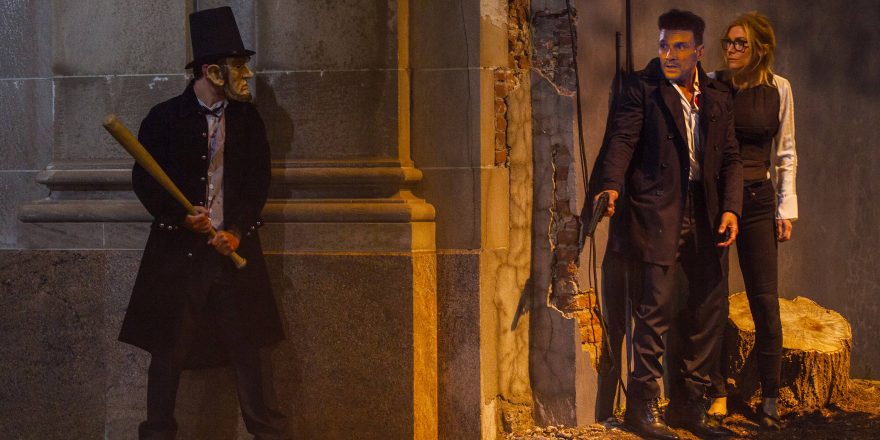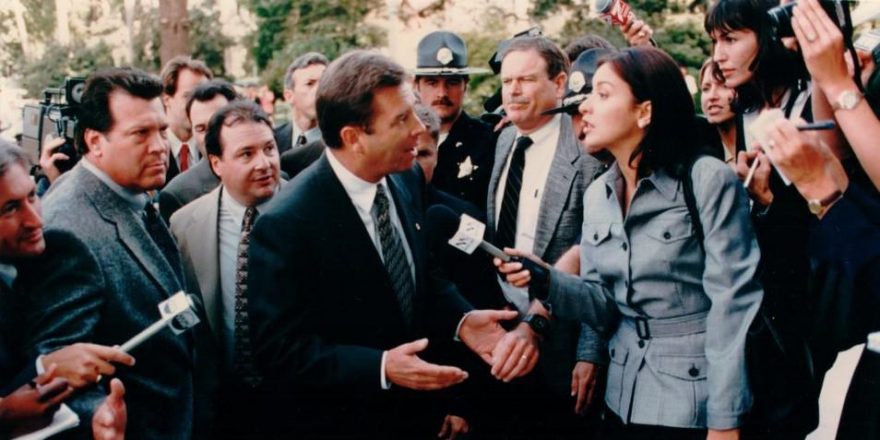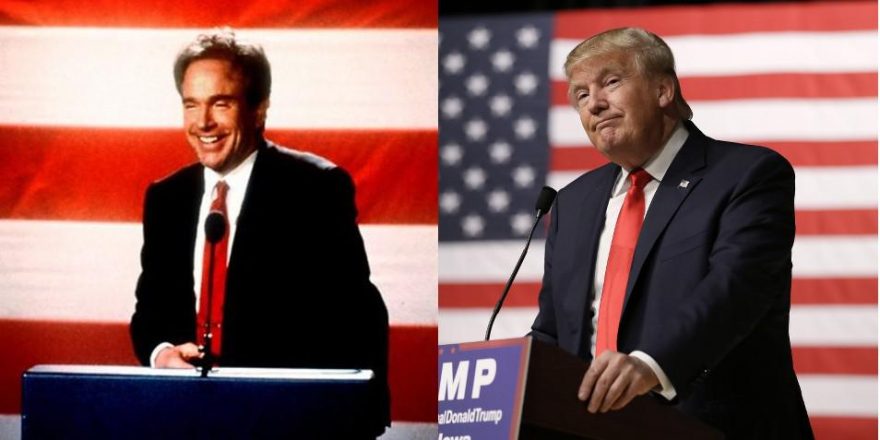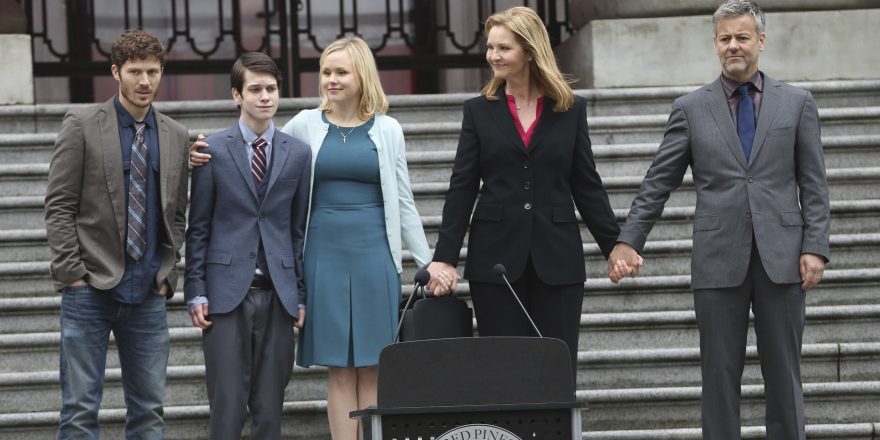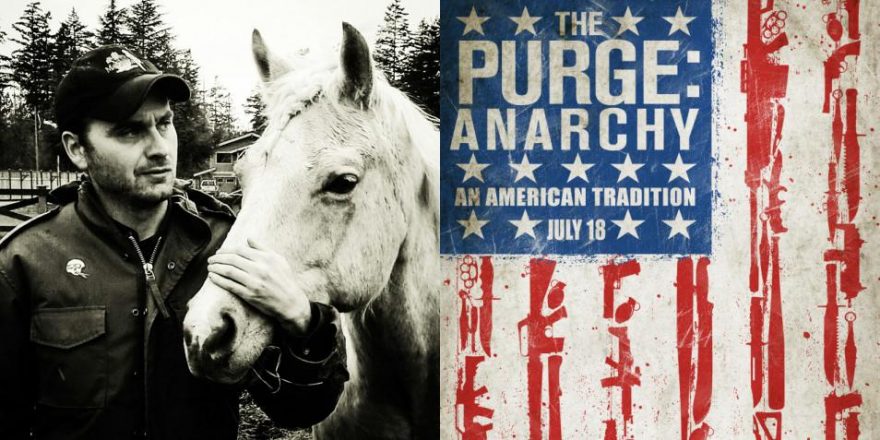Like many of my fellow cinephiles, I’ve had a serious case of sequel fatigue for a number of years now, but there is one franchise I just can’t get enough of: writer-director James DeMonaco’s The Purge movies, which have developed into an increasingly complex – and increasingly disturbing – vision of American culture that is all the more effective for its contradictions and unanswered questions. If you’re not familiar with the series, the basic premise that informs all of the films is that in the near future the government has lowered crime considerably by instituting an annual “purge,” a 12-hour period during which virtually all crime is legal – the rest of the year is relatively peaceful, a somewhat flimsy conceit DeMonaco sells by constricting his view almost entirely to the 12-hour purge in each movie. In typical modern horror fashion, the franchise starts small, with a contained thriller (2013’s The Purge) in which home-security specialist Ethan Hawke is forced to defend his home and family during the Purge; once the action gets rolling, the movie never leaves Hawke’s house and essentially follows the formula of movies like Wes Craven’s The Last House on the Left and The Hills Have Eyes, in which a mild-mannered American family discovers its inner savagery.
Even though the first Purge is considerably more limited in scope than its sequels, DeMonaco still manages to embed a lot of interesting ideas about class and race in the narrative, in which the escalating violence is implied to be the logical extension of unrestrained capitalism. I have no idea if DeMonaco envisioned The Purge as a franchise from the beginning, or if he decided to take full advantage of a lucky break when the first movie became a hit, but his 2014 follow-up, The Purge: Anarchy, expands on the premise of its original like no sequel since Terminator 2, making the implicit explicit in an overtly political assault on the 1%. The original Purge has it both ways in a sense, making Ethan Hawke’s character both an identification figure for the mass audience and a symbol of capitalist greed: he’s gotten rich building faulty security systems, but he’s under assault by a team of even richer, more entitled assholes – a group of sociopathic young snobs who could have stepped right out of a Bret Easton Ellis novel. The Purge: Anarchy broadens its perspective to tell an ensemble story in which the moral lines are more clearly drawn; the Purge itself has both economic and therapeutic benefits for the extremely wealthy, white, and powerful, while for everyone else it’s just a more extreme version of the exploitation that goes on all year.
The local vision of the first film thus expands to the national in the second and, in one slyly disturbing and darkly funny digression, international in the latest entry, The Purge: Election Year. That digression is a beautiful self-contained example of what makes DeMonaco a great filmmaker: early on in the film, we meet a group of foreign travelers at the airport who have flown to America to engage in a form of “murder tourism” – they’re here to participate in the Purge and commit crimes they can’t engage in back home. This brief scene is charged with multiple meanings and resonances, evoking the xenophobia of the modern Republican Party under Trump and raising questions about modern Western “civilization” in all senses of the word. The movie is packed with these kinds of iconic scenes and images; it’s like one long cinematic echo chamber in which the political climate we find ourselves in is referred to, but never quite replicated head-on. The core story involves a senator running for president on a platform to eradicate the Purge; she kind of resembles Hillary Clinton, and the supporters of her opponent – an evangelical preacher turned politician – make up a composite group of contemporary right-wing archetypes: white supremacists, NRA stooges, billionaire narcissists, etc. The most unsettling moment (in a movie that has a lot of them) comes when some conservative purgers get their hands on the Clinton-esque senator and gleefully prepare to tear her to pieces – I’d never imagined such a vivid and accurate pictorial representation of Republicans’ Hillary Derangement Syndrome could be possible.
The Purge: Election Day consists of many great moments like that, moving back and forth with ease between big sociopolitical questions and more personal, philosophical ones; it’s not just about America’s relationship with violence, but about humanity’s deeply rooted impulse to oppress – and to be oppressed. DeMonaco’s expanding vision over the course of the trilogy does have its drawbacks when it comes to maintaining the audience’s suspension of disbelief; the first film’s limited space allowed it to succeed as pure allegory, but as the movies encompass more geography and take on a greater number of ideas they feel more connected to the physical world we all live in – a good thing overall, but it does make the viewer more curious about the overall logistics of the Purge in a way that doesn’t always stand up to close scrutiny. The whole idea that the Purge is partly designed to get rid of a certain number of poor people for the rich’s economic benefit is somewhat half-baked; the arguments put forth for this are the usual conservative talking points about how the poor drain the system via welfare and other social programs, but it’s unclear whether DeMonaco is satirizing this point of view or believes it – the movies never get detailed enough about the specific effects on the economy and culture for the basic premise to be truly plausible.
Ultimately, though, this slightly murky quality is a strength, not a weakness; the Purge movies get under your skin precisely because, for all their brute force and blunt dialogue, there’s something elusive about them. Are they critiques of the ugliest aspects of American culture, or symptoms of them? Are they liberal or conservative, or neither? Or both? DeMonaco’s playing a sly game here, leaving just enough open-endedness in his arguments to invite multiple interpretations; it’s the same game played by some of the greatest movies of all time, like Invasion of the Body Snatchers and Bonnie and Clyde and Dirty Harry and GoodFellas. RogerEbert.com critic Simon Abrams slammed Election Year for being “a prime example of the condition it derides,” which completely misses the point – DeMonaco knows exactly what he’s up to when he both condemns violent excess and whips up the audience’s bloodlust. His film is an indictment of the kind of mob mentality encouraged and exploited by Donald Trump, but it’s also a recognition of how close to the surface those impulses are in most of us, regardless of political affiliation or economic station.
As DeMonaco has taken advantage of bigger budgets and greater creative freedom to represent a broader cross-section of society, he has reached opposite conclusions from those of another great – and very, very different – cinematic social critic, Jean Renoir. Whereas for Renoir there were no true villains, for DeMonaco there are no true heroes – the characters in his films may be victims of the system, but the implication is that it’s the system they deserve. Throughout the film there’s a grim running joke that the uninformed voters can’t be trusted, leading to multiple assassination plots on both sides; it’s the horror movie corollary to a contested convention. The whole movie works like that, and it gives the relentless violence a queasy, cathartic kick – it’s the catharsis that comes from seeing characters burn the flawed system they’ve created to the ground. These days, is there anyone on either side of the aisle who can’t derive a little vicarious pleasure from that?


